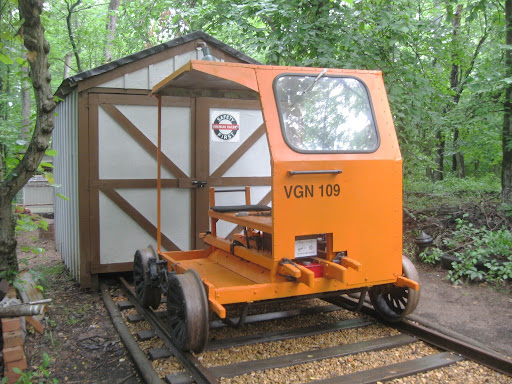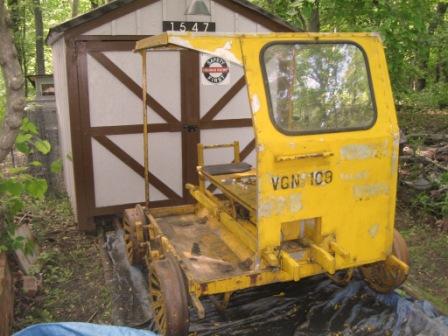



Being a retired history teacher, I know the value of primary sources. To learn as much as I can about my car and Virginian's motor cars and the men who used them, I am seeking out former employees and interviewing them and digging through company records in my personal collection as well as the N&W Historical Society's archives.
A company collection, "Authorization For Expenditure Register 1915-1959," reveals that a model 41 Sheffield motor car was purchased from Sheffield - Fairbanks Morse Company of Three Rivers, Michigan on July 3, 1924. The cost was $240.00 for the car weighing 450 pounds and producing 8.5 horse power. The car is direct drive, meaning when the engine is running, the car is moving. To start it, the model A-like controls must be correctly adjusted and then the car is pushed. The operator must quickly jump on before it runs away! The AFE states that the car was purchased "for Victoria" which was a crew change point on the Norfolk Division at milepost 120 and it was numbered 905.
When Sheffield shipped the cars, Sheffield had painted them in their standard color scheme of dark green with the engine painted black, some engine parts being silver and the fuel tank being painted red. Iron mechanical parts, such as the brake apparatus, were black. The railroad repainted the green parts to orange.
In 1953, Virginian contracted with N&W for that railroad to install an aluminum half front with a single window and a roof. A manually operated windshield wiper was added in 1955. Also added was a battery powered headlight, which hung on the front hand grab iron, with an attachment to the rear for a red tail light. These lights were required under a new Virginia law. Although there is no company documentation, employees recall that the car numbers were changed when these improvements were made. My car became 109.
My car survived the VGN-N&W merger of 1959, the NKP-Wabash-N&W merger of 1964 and into the era of Norfolk Southern which was created June 1, 1982. The car was still on the NS (combined N&W-Southern) equipment roster in 1986 but was finally retired in two more years. It was purchased by a collector in Ohio who kept the car safely stored inside until selling it to my friend in July 2009. It was brought indirectly from Dayton, Ohio to Lynchburg, Virginia, arriving at our home July 20, 2009. It spent its first night inside my newly built replica VGN motor car shed.
A picture shows the wire from the battery headlight to the rear red light. The headlight was hung on the cars grab iron.
Another picture shows the various N&W numbers the car wore after the VGN merger with the N&W in 1959. When sanding the front the first day I owned the car, the Virginian number appeared on the left, VGN 109! Also, one picture shows the N&W number on a back, lower brace; N&W N 109. As I worked to find the car's original number, nothing new appeared on the front as the old paint was removed. My last chance was on that lower, back brace, I hoped. As I sanded away the N&W on the left side, nothing appeared. Virginian must not have had any lettering there. However on the right side as I sanded N 109, I thought I was seeing 1005. But 1005 was in the series of Virginian's Sheffield model 40-b motor cars. I sanded even more lightly and I found that what I thought was a 1, actually was the right side of the letter N. The last two digits, 0 and 5 were clear, but the digit to the left of the 0 was not. More careful sanding showed faintly that the digit was a 9! My car was originally 905! The layers of paint were: red primer was the first layer; orange; yellow; then N&W paint - lighter yellow for two more layers. I have added an illustration to show this sequence.






























